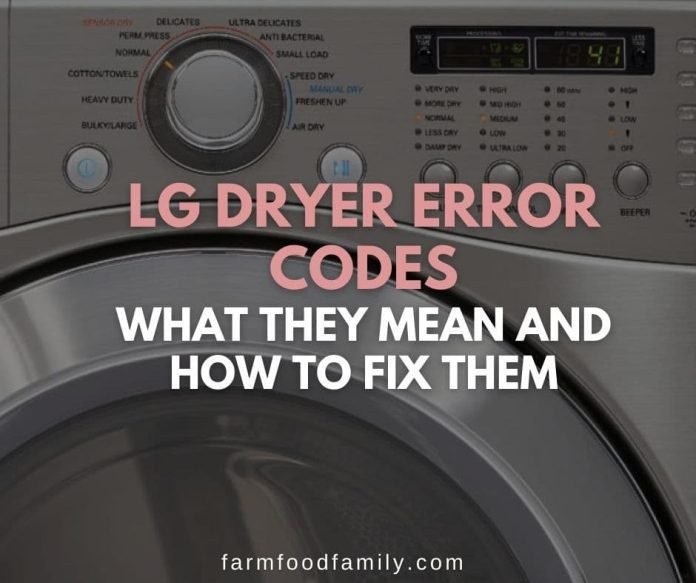
Now, you might be wondering, “Is this problem serious? And more importantly, does it fall under LG’s warranty coverage?” Let’s face it, nobody wants to incur additional repair costs or deal with the hassle of fixing appliances themselves. Fortunately, this is where understanding your warranty can save you a lot of headaches—and money. So, let’s break down what this error code means, how warranties work, and what steps you can take next.
Understanding the E2 Error Code on Your LG Dryer
First things first: What does the E2 error code actually mean? In simple terms, the E2 code typically indicates an issue with the temperature sensor of your LG dryer. Think of this sensor as the brain behind the machine’s drying process. It monitors how hot things are getting and tells the dryer when to adjust the heat. When it malfunctions, it’s like the dryer losing its sense of touch—it doesn’t know how hot it’s getting, and that’s a problem.
The temperature sensor’s failure can result from a few different issues. Sometimes, it’s just a matter of the sensor being out of calibration or needing a quick reset. In other cases, it could be damaged or faulty wiring that’s causing the signal to short-circuit. Whichever the case, the dryer isn’t able to maintain the right temperature, which might leave your clothes damp and disappointing.
So, what should you do when you see this error code? Well, the immediate step is always to consult your manual. There’s usually a section that explains error codes and possible quick fixes. Sometimes, it’s as easy as unplugging the dryer for a few minutes to perform a reset. However, if the issue persists, it might be time to consider a more thorough repair.
Does Warranty Cover the E2 Error Code?
Here’s the deal: Whether or not the E2 error code is covered under warranty depends on several factors. Most importantly, it will hinge on the specific terms of the warranty you received when you purchased your dryer. LG, like many manufacturers, typically offers a standard warranty that covers specific components for a limited time—often a year for parts and labor.
The crux of the matter is whether the faulty temperature sensor falls under the warranty’s covered components. If the sensor is deemed a part of the dryer’s electronic system, it might very well be covered. However, warranties often have exclusions for wear-and-tear or issues arising from improper use. It’s a bit like insuring a car: the warranty covers certain faults, but if you drive over nails repeatedly, those tire punctures aren’t covered.
To get a concrete answer, you’ll want to dig out your warranty paperwork and give it a read. Many warranties require the product to be registered within a certain period for the coverage to be valid. If you’re missing any paperwork, don’t worry—most companies, including LG, have online resources or customer service numbers you can contact for details on your specific model.
What Steps Should You Take Next?
So you’ve gone through the initial checks and the error keeps popping up. Now what? If it looks like the warranty might cover your issue, jot down the error code and your dryer’s serial number. Contact LG’s customer service or the retailer where you bought the dryer. Explain the issue, provide them with the details, and ask if it’s covered.
If your warranty does cover the repair, LG will likely arrange for a technician to come out and address the issue. This can save you from the headache of trying to fix it yourself and ensures that a professional gets your dryer back to working order. However, if your warranty has expired or doesn’t cover this issue, you might need to pay out of pocket for repairs. Even then, it’s often a good idea to have a professional diagnose the problem—they can verify if it’s the sensor or something else entirely.
In the meantime, while you’re waiting for a resolution, consider using a friend’s dryer or a local laundromat to get through your laundry day. And remember, going forward, regular maintenance checks can help prevent similar issues. Ensuring vents and lint traps are clean can prevent overheating and keep sensors functioning correctly—just like doing regular oil checks can keep your car engine purring smoothly.
By understanding what the E2 error code means and how your warranty might cover it, you’re already one step ahead in resolving the issue swiftly and efficiently. Good luck, and here’s to the return of perfectly dry clothes!